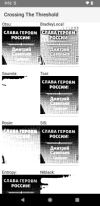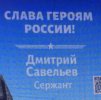this was a fun project, of interest,
perhaps, to ocr mavens. the
problem doesn't occur as much with
barcode scanning.
background noise can drown out the
text you are trying to extract. attempting
to separate the text (so-called foreground)
from the noise (background) is achieved
with varying degrees of success using
a process called thresholding.
there are a number of such methods.
i've tried to put a number of them under
one roof.
if text extraction fails, the user could tap
a button to run the various thresholding
methods and choose the best one (if any)
to use. in some cases, in addition to
performing thresholding, the resultant
image might need to be inverted. ocr
expects the text to be black. a button
could be tapped to perform that operation
as well.
attached please find a example of a noisy image
and its thresholded counterparts
perhaps, to ocr mavens. the
problem doesn't occur as much with
barcode scanning.
background noise can drown out the
text you are trying to extract. attempting
to separate the text (so-called foreground)
from the noise (background) is achieved
with varying degrees of success using
a process called thresholding.
there are a number of such methods.
i've tried to put a number of them under
one roof.
if text extraction fails, the user could tap
a button to run the various thresholding
methods and choose the best one (if any)
to use. in some cases, in addition to
performing thresholding, the resultant
image might need to be inverted. ocr
expects the text to be black. a button
could be tapped to perform that operation
as well.
attached please find a example of a noisy image
and its thresholded counterparts


